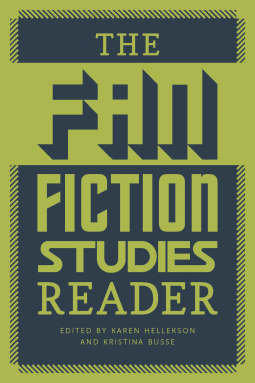 Lately I’ve been reading up about Fan Fiction. Why? I don’t know. Yes, I do have a few fan fiction ideas rattling around in my brain but I’m not sure I’ll do anything about it. (Today I am having one of those “oh man I have so many ideas and no time!” kind of days. Brain, kindly stop thinking so I can get some stuff done and clear up my schedule a bit!) But it is always interesting to read about fan fiction in other fandoms. This book seems to have mentions of Star Trek and Sherlock Holmes, which are apparently really, really big with the whole fan fiction thing – and I really had no idea. (Aside from seeing it mentioned in other fan fic books I’ve read lately.) I guess I shouldn’t be all that surprised – if there are interesting characters already there for you it is not all that difficult to take them and run with whatever fantasies you may have for them.
Lately I’ve been reading up about Fan Fiction. Why? I don’t know. Yes, I do have a few fan fiction ideas rattling around in my brain but I’m not sure I’ll do anything about it. (Today I am having one of those “oh man I have so many ideas and no time!” kind of days. Brain, kindly stop thinking so I can get some stuff done and clear up my schedule a bit!) But it is always interesting to read about fan fiction in other fandoms. This book seems to have mentions of Star Trek and Sherlock Holmes, which are apparently really, really big with the whole fan fiction thing – and I really had no idea. (Aside from seeing it mentioned in other fan fic books I’ve read lately.) I guess I shouldn’t be all that surprised – if there are interesting characters already there for you it is not all that difficult to take them and run with whatever fantasies you may have for them.
It is interesting that this is now becoming a field of study – and that this is one of the texts that will be used. I mean, I can totally see this being used as a text book because it has a lot of great information in it and covers several different genres and aspects of fan fic, I guess it’s just interesting to me that people are studying it. But then again, I’m the one who is reading multiple books about it so I’m not sure why that’s so far fetched to me either.
If you’re interesting in learning more about Fan Fiction then this is a great reader to check out.
I received a free e-copy of this book in order to write this review. I was not otherwise compensated.
About the Book
An essential introduction to a rapidly growing field of study, The Fan Fiction Studies Reader gathers in one place the key foundational texts of the fan studies corpus, with a focus on fan fiction. Collected here are important texts by scholars whose groundbreaking work established the field and outlined some of its enduring questions. Editors Karen Hellekson and Kristina Busse provide cogent introductions that place each piece in its historical and intellectual context, mapping the historical development of fan studies and suggesting its future trajectories.
Organized into four thematic sections, the essays address fan-created works as literary artifacts; the relationship between fandom, identity, and feminism; fandom and affect; and the role of creativity and performance in fan activities. Considered as literary artifacts, fan works pose important questions about the nature of authorship, the meaning of “originality,” and modes of transmission. Sociologically, fan fiction is and long has been a mostly female enterprise, from the fanzines of the 1960s to online forums today, and this fact has shaped its themes and its standing among fans. The questions of how and why people become fans, and what the difference is between liking something and being a fan of it, have also drawn considerable scholarly attention, as has the question of how fans perform their fannish identities for diverse audiences.
Thanks to the overlap between fan studies and other disciplines related to popular and cultural studies—including social, digital, and transmedia studies—an increasing number of scholars are turning to fan studies to engage their students. Fan fiction is the most extensively explored aspect of fan works and fan engagement, and so studies of it can often serve as a basis for addressing other aspects of fandom. These classic essays introduce the field’s key questions and some of its major figures. Those new to the field or in search of context for their own research will find this reader an invaluable resource.